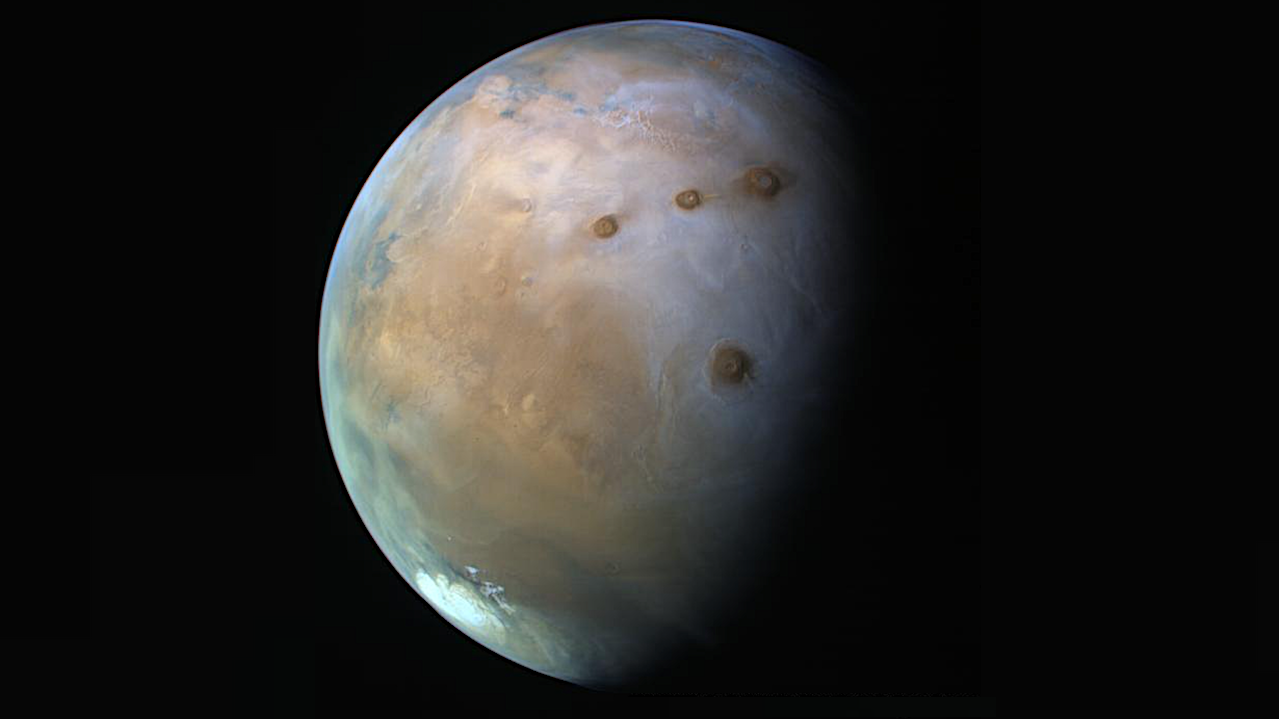Science
New Research Reveals Potential for Life Beneath Mars and Icy Moons

A groundbreaking study from NYU Abu Dhabi suggests that life could potentially survive beneath the surface of Mars and other celestial bodies in our solar system, utilizing energy from high-energy particles known as cosmic rays. This research, led by Dimitra Atri, Principal Investigator at the Space Exploration Laboratory at NYUAD’s Center for Astrophysics and Space Science (CASS), challenges longstanding assumptions about the conditions necessary for life.
The findings, published in the International Journal of Astrobiology, indicate that cosmic rays, previously considered mainly harmful, may play a crucial role in supporting microscopic life in dark and cold environments. The study highlights a process called radiolysis, which occurs when cosmic rays collide with water or ice underground, breaking water molecules apart and releasing electrons. Some bacteria on Earth can harness these electrons for energy, similar to how plants utilize sunlight.
Using advanced computer simulations, Atri and her team assessed the energy production from radiolysis on various celestial bodies, focusing on Mars and the icy moons of Jupiter and Saturn. Their research found that Saturn’s moon Enceladus has the greatest potential for supporting life through this mechanism, followed closely by Mars, and then Europa, one of Jupiter’s moons.
“This discovery changes the way we think about where life might exist,” Atri stated. “Instead of looking only for warm planets with sunlight, we can now consider places that are cold and dark, as long as they have some water beneath the surface and are exposed to cosmic rays. Life might be able to survive in more places than we ever imagined.”
The study introduces the concept of a Radiolytic Habitable Zone, which expands the traditional “Goldilocks Zone” idea. While the Goldilocks Zone refers to the area around a star where conditions are just right for liquid water on a planet’s surface, the Radiolytic Habitable Zone focuses on locations where water exists underground, energized by cosmic radiation. This suggests a broader range of environments in the universe where life could potentially exist.
With cosmic rays prevalent throughout space, the research provides a new framework for future space missions. Instead of solely searching for signs of life on planetary surfaces, scientists may now direct their efforts toward exploring underground environments on Mars and the icy moons, employing tools capable of detecting chemical energy generated by cosmic radiation.
This study not only opens new avenues in the quest for life beyond Earth but also indicates that even the darkest and coldest regions of our solar system could harbor conditions suitable for survival. The implications of this research are vast, potentially reshaping our understanding of life’s resilience and adaptability in the universe.
-

 Lifestyle2 months ago
Lifestyle2 months agoLibraries Challenge Rising E-Book Costs Amid Growing Demand
-

 Sports2 months ago
Sports2 months agoTyreek Hill Responds to Tua Tagovailoa’s Comments on Team Dynamics
-

 Sports2 months ago
Sports2 months agoLiverpool Secures Agreement to Sign Young Striker Will Wright
-

 Lifestyle2 months ago
Lifestyle2 months agoSave Your Split Tomatoes: Expert Tips for Gardeners
-

 Lifestyle2 months ago
Lifestyle2 months agoPrincess Beatrice’s Daughter Athena Joins Siblings at London Parade
-

 World2 months ago
World2 months agoWinter Storms Lash New South Wales with Snow, Flood Risks
-

 Science2 months ago
Science2 months agoTrump Administration Moves to Repeal Key Climate Regulation
-

 Business2 months ago
Business2 months agoSoFi Technologies Shares Slip 2% Following Insider Stock Sale
-

 Science2 months ago
Science2 months agoNew Tool Reveals Link Between Horse Coat Condition and Parasites
-

 Science4 weeks ago
Science4 weeks agoSan Francisco Hosts Unique Contest to Identify “Performative Males”
-

 Science2 months ago
Science2 months agoNew Study Confirms Humans Transported Stonehenge Bluestones
-

 Science2 months ago
Science2 months agoTom Lehrer, Pioneering Satirist and Musician, Dies at 97









